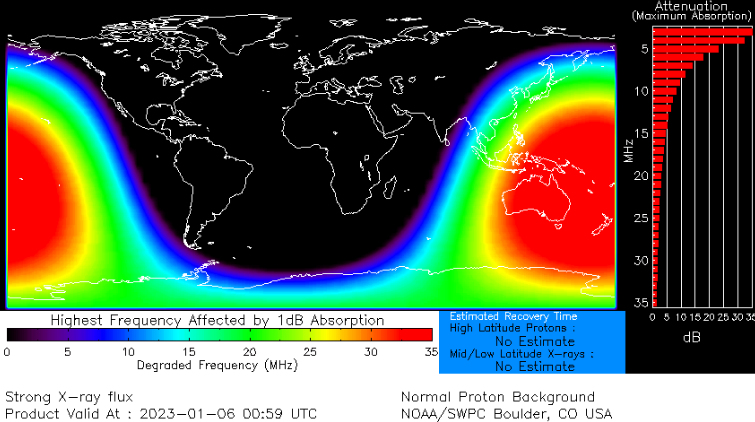Previously hidden sunspot unleashes colossal X-class solar flare as it turns to face Earth
The volatile sunspot might not be finished yet.
A newly emerged sunspot is making its presence known, unleashing a powerful X-class solar flare that triggered shortwave radio blackouts across the South Pacific.
NASA's Solar Dynamics Observatory recorded a massive solar flare on Thursday (Jan 5) at 7:45 p.m. EST (0045 GMT on Jan. 6). The outburst blasted out a glowing-hot plasma dome that lingered above the sunspot AR3182 for over an hour, according to Spaceweather.com. Because of the sun's rotation, the lively sunspot will soon face Earth and could continue its explosive activity in the days ahead.
Solar flares are categorized by size into lettered groups, with X-class being the most powerful. Within each class, numbers from 1 to 10 (and beyond, for X-class flares) denote a flare's relative strength. The recent flare clocked in at X1.2, a relatively weak example of the most powerful class.
AR3182 has also been linked to the violent eruption on Tuesday (Jan. 3) that sent a coronal mass ejection (CME), a giant cloud of magnetized plasma, barrelling off into space. At the time, the sunspot was hidden on the far side of the sun and so the eruption posed no danger to Earth.
Related: A giant plasma cloud bursts from the sun, but fortunately it won't hit Earth

Solar flares are caused when magnetic energy builds up in the solar atmosphere and is released in an intense burst of electromagnetic radiation. More powerful, M-class and X-class flares can cause minor to extensive radio blackouts on the side of Earth facing the sun at the time of the eruption.
This is exactly what happened when the recent X1.2 class solar flare sent a strong pulse of X-rays and extreme ultraviolet radiation toward Earth. Traveling at the speed of light, the radiation reached Earth in just over eight minutes and ionized the upper layer of Earth's atmosphere — the thermosphere — triggering a shortwave radio blackout across the South Pacific.
Get the Space.com Newsletter
Breaking space news, the latest updates on rocket launches, skywatching events and more!

According to Spaceweather.com, so far, no CME has been observed emerging from the area after the massive flare.
Solar activity is on the rise as part of solar cycle 25, which scientists predict will peak in 2025. To find out if there is a solar flare today and to keep up with the latest space weather findings, visit the National Oceanic and Atmospheric Administration's Space Weather Prediction Center to see the most recent solar X-ray data from the agency's GOES weather satellites that perch over the eastern and western U.S.
Follow us on Twitter @Spacedotcom and Facebook.
Join our Space Forums to keep talking space on the latest missions, night sky and more! And if you have a news tip, correction or comment, let us know at: community@space.com.

Daisy Dobrijevic joined Space.com in February 2022 having previously worked for our sister publication All About Space magazine as a staff writer. Before joining us, Daisy completed an editorial internship with the BBC Sky at Night Magazine and worked at the National Space Centre in Leicester, U.K., where she enjoyed communicating space science to the public. In 2021, Daisy completed a PhD in plant physiology and also holds a Master's in Environmental Science, she is currently based in Nottingham, U.K. Daisy is passionate about all things space, with a penchant for solar activity and space weather. She has a strong interest in astrotourism and loves nothing more than a good northern lights chase!









